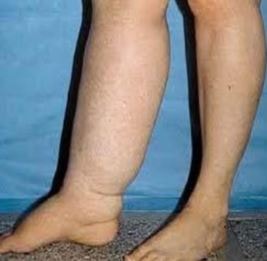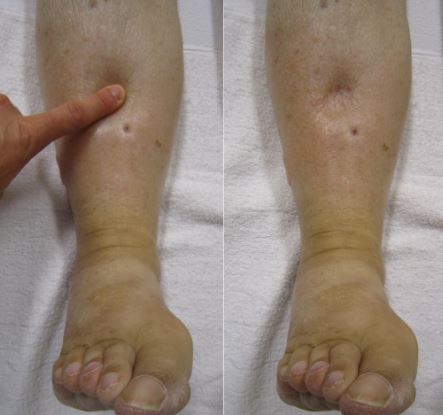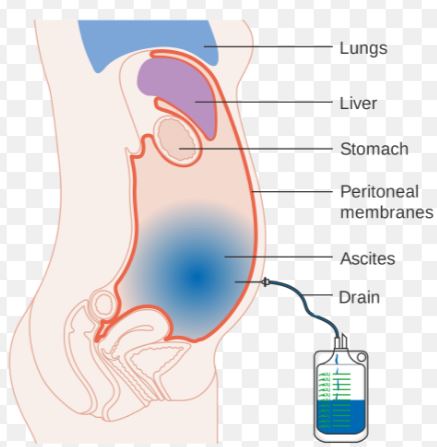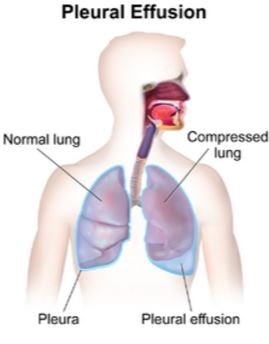Dropsy
What is dropsy?
The word ‘dropsy’ is previously used in United States to explain edema. Excess amount of fluid when accumulated beneath the skin or under the body cavities is called dropsy or edema. The clinical symptom of edema is local swelling in the body. Usually the swelling is observed at the lower limb, including ankles, feet and legs, though it can occur any other sites, depending upon the dropsy affects the part of the body. Body fluids are mainly accumulated in the interstitial space. The interstitial space is present between the underlying tissues.(1)

Etiology
In healthy physiology, the excess amount of fluid goes to blood and through circulation, it excretes via urine, sweat and feces. If any obstruction occurs in the circulatory system or blood becomes thicker, then it decreases oncotic pressure. Onchotic pressure helps to flow the fluid inside the vessels present in the body. These etiology resultant retention of the fluid in the space between tissues and swelling occurs. Depending upon the fluid accumulation site, dropsy are different types- peripheral edema, pulmonary edema, ascites and pleural effusion.(3,4)
Types
Peripheral edema
If the excessive fluids accumulate at the peripheral sites of the body, including feet, legs and ankle, then it is called peripheral edema.

Pulmonary edema
If the excessive fluids are accumulated at the interstitial space present between alveoli of the lung, then it is termed as pulmonary edema.
Ascites
If the excessive fluids are accumulated in the abdominal cavity or peritoneal cavity, then it is called ascites.

Pleural effusion
If the excessive fluids accumulate in the chest cavity may be in the lung or pleural cavity, then it is termed as pleural effusion. (3)

Causes
The following underlying causes ARE:
Cardiac disorders
The systemic circulation is hampered in cardiac disorder and blood does not reach to kidney for purification and excretion. Therefore, excessive fluids accumulate in the interstitial space. Peripheral edema is a common symptom of cardiac disorders including hypertension and heart failure.
Renal disorders
If renal system, specifically kidney failure has the symptom of dropsy, as kidney unable to excrete excessive fluid and wastes from the body. The excessive fluid is accumulated in different site of the body.
Liver cirrhosis
Liver cirrhosis is a common cause of ascites due to leakage of fluid from the liver to the abdominal cavity.
Deep Vein Thrombosis
Clot formation inside the deep vein present in the leg can obstruct the blood flow and cause dropsy.
In the above mentioned all the pathological conditions cause obstructed venous flow and provide the symptoms of swelling and edema.
Pregnancy
This is a physiological condition and dropsy is a common symptom of pregnancy. (2, 3)
Symptoms
The following symptoms are common in dropsy:
- Swelling and distention occur in legs specifically at feet and ankle. Hands are face become puffy occasionally.
- The affected skin become expanded and glossy
- Pressing on the skin of the affected site can cause dimple and lasts for few seconds. This type of edema is known as pitting edema.
- Breathing difficulty, pain in the abdomen, chest pain, reduced urine output may develop depending upon the underlying cause.
Treatment
The medications prescribe to control the dropsy is depending upon the underlying cause. The following drugs are used to treat dropsy:
Diuretics
The medications which increase the urine passage is termed as diuretics. Diuretics are classified into different types depending upon the mechanism of action. Doctors prescribe according to the fundamental cause of the dropsy.
Anti-hypertensive
The drugs, which can control the hypertension is known as anti-hypertensive. These also different types and have different mechanism of actions.(3)
Home remedies
There are certain home remedies, which can control dropsy, such as
- Limit the intake of salt in diet. Salt influences water retention and symptoms of dropsy become worse.
- During resting, legs should be elevated in position. The elevation of leg helps to circulate the blood towards the heart due to gravitational force.
- Wearing of stockings can reduce swelling.
- Avoid prolonged sitting on the chair and long distance travelling
- Walk for short intervals for maintaining the blood flow
- Avoidance of alcohol to prevent liver cirrhosis. (2)
References
- Definition (2012); Retrieve from: http://www.medicinenet.com/script/main/art.asp?articlekey=13311
- SALINA (2012), Dropsy Disease In Humans: Its Causes, Symptoms And Treatment; Retrieve from: http://www.simple-remedies.com/home-remedies/edema/dropsy-disease-humans-causes.html
- WebMD Medical Reference; Oedema; Retrieve from: http://www.webmd.boots.com/heart-disease/guide/oedema
- What is EDEMA? Retrieve from: http://www.wisegeek.org/what-is-dropsy.htm
